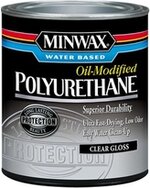My experience is limited to CA and Shellawax friction polish for pens. The friction polish offered little in the way of strength, my personal pen was black walnut, it dented easily. It also dulled over time, as expected, giving it an aged look. The CA finish on my personal pens has held up quite well. I wear my pens in my front pocket, and am quite careful with them, so might not be the best test subject. One downside that I have encountered with CA is cracking due to changes in moisture. I haven't had this issue with straight grained woods, but have had a couple burls crack. I would say that CA provides a lot of hardness and scratch resistance, but this is traded off with some brittleness. In general, I think that is the case with wood finishes, loads of trade-offs. If there was one "best" finish then we wouldn't have a zillion options. Also, "durable" is subjective. Resistance to drops, scratches, sunlight, time, etc -- what is your measure of durable?

